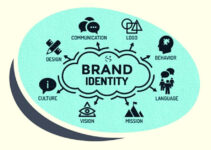The AR ads have been increasing significantly for the past few years. The pandemic crisis in 2020 restricted the activities of people and limit them to their houses, but tech innovation and development was captivating their attention. The total number of active users of AR technology would reach 1.73 billion people by the end of 2024, according to an estimate by Statista. Today, we’ll discuss augmented reality advertising; various campaigns, advantages, challenges, and examples.
The consumer trend report of Zenith UK showed that AR ads have been growing since 2021. It forecasted that the worldwide spending on AR ads would increase 30% by the end of 2023. Augmented reality is not an emerging technology anymore. According to Zenith’s report, 72% of the UK public perceives AR technology to be an engaging and fun activity. They persuade businesses and companies to include AR ads campaigns in their marketing and sales strategy.
What is Augmented Reality Advertising?
AR (augmented reality) advertising is a form of mobile ad unit; it follows the process of superimposing 3D models or virtual objects of game characters and products onto the real world environment by using the smartphone camera and AR app. After pointing the camera in a particular direction or at a special marker point, the AR ads would allow you to see 3D models or virtual objects on the screen of your smart device.
There are different types of tools and techniques for developing AR experiences; the selection of the particular tool relies on the intricacy and complexity of the work. Some of the tools and applications like ARCore and ARKit have got SDKs, and they combine android smartphones and iOS. MaxSt and Wikitude are some of the other tools that are platform-independent.
Top Augmented Reality Advertising Campaigns
Some of the top four AR ads campaigns are as follows;
Burger King Burn That AD
Burger King launched a famous “burn that ad” campaign in 2019 by targeting the ads of competitors. The Application of BK in Brazil allowed smartphone users to burn the ads of a competitor by using the AR feature. After the dying flames, the customer could see the logo of the company inviting them to visit the nearest BK restaurant.
World’s Coolest Label “Mcqueen Gin”
Mcqueen Gin planned to amplify its gin-drinking experience and make its brand adventurous by launching the slogan “world’s coolest label.” Customers could scan the bottle label by using Mcqueen’s smartphone application. The application would bring the bottle back to life with the full length of colorful and vibrant animation and flavor behind the bottle. The AR experience provides customers an opportunity to learn about the distillery via cartoon characters that mirror the company’s alternative strategy to gin in the market.
150 Years of Healing “Vaseline”
On the 150th anniversary of Vaseline in 2020, the famous household brand celebrated it by offering customers an AR experience. Vaseline tin users could watch the 150 years of history by scanning it, and they could also play the Vaseline game.
Rita Ore, EE 5G Web AR Experience
EE was the most prominent brand to launch the AR campaign outlining the 5G service in 2020, and showing the capabilities of iPhone 12 pro users with it. The AR experience offered customers an opportunity to watch the performance of Rita Ore as an Avatar and experience the latest single in their own house. At the end of the performance, customers see the button “discover the power of 5G” and it takes them to the EE website.
Advantages of Augmented Reality Advertising
Memorable Experience
AR ads offer customers an experience to remember the experience. According to the report of Zenith, customers could remember 70% of the AR experience. The AR ads offer an interactive experience between the customers and the brand; the customers could actively participate in it.
Higher Engagement
Neuro-Insight conducted a research study analyzing the neurological impact of AR ads on customers. The study analyzed and tracked the brain response of customers to different stimuli. However, the study concluded that AR Experience multiplies the response and engagement of customers as compared to the non-AR experience. The attention level of customers is also higher.
Higher Conversion Rate
The reports of Shopify showed that the conversion rate of products featuring AR content is higher roundabout 94%. The AR experience allows customers to develop a stronger connection with the brand; the positive connection paves the way for better engagement.
Challenges to Advertising Reality Advertising
May Lose Its Charms
It is no doubt AR ads offer a fun, engaging, and memorable experience because of the novel concept. Once it becomes customary and all other brands start using it, the high competition would make the AR experience a casual thing that everyone is offering it. In other words, it would lose its charm.
High Cost
The high cost of launching AR ads is one of the main obstacles that companies face while offering the AR experience to their customers. Approximately 1000 marketers and advertisers participated in the study conducted in 2019 showed that 39.1% of them highlighted the cost and 24.6% of them stated technology to be their main hindrance to adopting the AR technology.
The development in technology is lowering the cost of the development of AR features and marketing tools. In other words, hope is there for businesses and companies.
Conclusion: What is Augmented Reality Advertising? Campaigns, Pros & Cons
After an in-depth study of what is augmented reality advertising; four main campaign examples, advantages, and challenges to AR ads; we have realized that AR ads play a significant role in customer engagement and user experience. If you plan to develop it for your company, then you should keep in mind the abovementioned tips and suggestions.

Ahsan Ali Shaw is an accomplished Business Writer, Analyst, and Public Speaker. Other than that, he’s a fun loving person.


